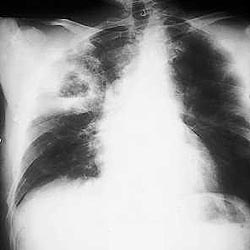Bacteria in the urine bacteria subjectively quantified in urine as small and many moderate. They can be detected in urine sediments unpainted, when in sufficient quantity. Identification: bacillary bacteria and chain cocci, often easily identifiable. At the top of the image on the right show

E. coli bacilli from case cystitis in dogs. However, small amorphous crystals, breakdown products of cells and small droplets of fat can either mask or mimic cocci (see below for more information). If you have any doubts about the presence of bacteria, Gram-stained smear of urine sediment (middle group) should be explored. This confirms the presence of Gram Gram-negative bacteria. Note that only the extracellular bacteria can be visualized on unpainted urine sediment. Intracellular bacteria can be identified only by cytological study of Wright's stained smears of urine sediment (lower panel shows the phagocytosis of bacteria in neutrophils. Nuclei of neutrophils to swell as storage-related artifact). Interpretation: Bacteria may be minor or significant contamination of pathogens. The difference between these two possibilities based on clinical features, method of urine, the number and types of bacteria, the presence of leukocytes in urine, urine storage and length of any underlying disease in animals. The urine in the bladder of normal animals sterile, bacteria are usually not considered in the urine, but it depends on the method of collection. Some bacteria in the distal urethra and / or genitals), seen in the urine, but usually the numbers are too low, if well in the middle of the river collection was obtained. Many bacteria, including a single type or accompanied by pyuria (leukocytes) are still in urgent >> << fresh urine sample (contaminating bacteria multiply in storage). Bacteria have clinical value (regardless of number) if they are observed in urine collected by cystocentesis (a sterile procedure or clean catheterization. Bacteriuria clinical significance, such as bacterial cystitis, usually accompanied by an increase in the number of leukocytes (. Pyuria) Yet Some animals with pyelonephritis or primary immunosuppression (eg, diabetes) may have clinically significant bacteriuria without pyuria cocci in the urine upper panel. Low of increase shows the increase in the number of leukocytes and a few crystals struvitnyh (unpainted wet preparation). leukocytes clear evidence of inflammation; background appears busy, but bacteria are not reliably identify this increase in average panel: High increase of raw white wet preparation showing leukocytes and cluster chains and bacteria (arrows) amorphous order strattera crystals or dust .. but could have almost identical appearance Using phase contrast microscopy can help to distinguish between them, but the analysis of Gram-stained drop of urine sediment is the most reliable Lower panel: .. High increase of Gram-stained. slide neutrophils and gram-positive cocci arranged in clusters and short chains are shown (arrows: some organisms are partially or completely znebarvlyuyetsya). We can conclude that the inflammatory process caused or complicated by bacterial infection © Cornell University
.
No comments:
Post a Comment